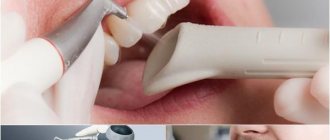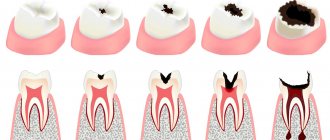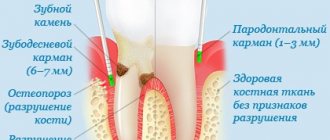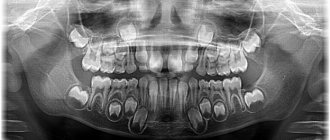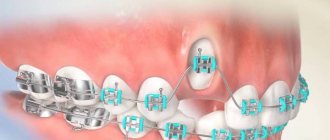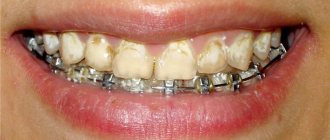If you ask people “which doctor scares them the most?”, the majority will answer dentist. This fear in adults, as a rule, comes from childhood, when dental treatment was a very unpleasant procedure. Memories of a white coat, the specific smell and sound of a drill evoke fear. Over time, everything has changed a lot, dental treatment has moved far forward, and modern anesthetics have made the treatment procedure as painless and comfortable as possible for the patient.
Is caries treatment painful?
Many people are convinced that caries is painful to treat, and therefore are afraid to go to the dentist. The problem goes back to the recent past, when anesthetics were not used in dentistry. Just a few decades ago, no one could even imagine that it was possible to treat teeth with anesthesia, and all manipulations were performed “live.”
In this article
- Is caries treatment painful?
- Is it painful to treat dental caries with anesthesia?
- Is anesthesia always necessary?
- How to treat caries with an injection step by step?
- Is it painful to treat caries on the front teeth?
- What anesthesia is used in the treatment of caries?
- Who is contraindicated for anesthesia?
- Conclusion
Of course, with this approach it was very painful to treat deep caries and other stages of this disease that affected the sensitive parts of the tooth. Fortunately, dental treatment methods have changed, modern safe anesthetics have appeared, and it has become easier to treat with an injection.
General anesthesia in dentistry
If you don’t delve too deeply into medical terminology, then anesthesia (this term already means general anesthesia of the body, so saying “general anesthesia” is incorrect) is, in fact, an artificially induced reversible condition in which a person is unconscious and has no reaction. for pain. Depending on the type and depth of anesthesia, it can be with spontaneous breathing or with artificial ventilation. The second option requires tracheal intubation (a special tube is inserted into the airway, usually after the patient falls asleep) or the use of other methods that allow air to be blown into the lungs, for example, a laryngeal mask. In dentistry, in the vast majority of cases, spontaneous breathing anesthesia is used.
General anesthesia in dentistry has several stages, which are important for us to consider in order to understand how deep it can be when performing dental treatment under anesthesia.
Analgesia
The analgesia stage begins a few minutes after the drug is administered to the body. With medication, consciousness is switched off, speech becomes incoherent, drowsiness appears, and pain sensitivity is lost. At the same time, breathing, pulse and pressure change little.
Excitation
The stage is characterized by motor and speech restlessness. Reflex activity and muscle tone are increased, the pupils are dilated and respond well to light, breathing is irregular. At this stage, no manipulations are carried out; it is only a transitional moment for immersion in deeper sleep.
Surgical stage
It begins from the moment the excitation ceases and rhythmic breathing is established without visible pauses. The surgical stage is divided into four more types of depth of anesthesia: superficial, light, complete and ultra-deep. With superficial or light general anesthesia, implantation, sinus lifting, treatment, and tooth extraction under anesthesia are performed. Serious maxillofacial operations are performed in deep cases.
Thus, for each type of dental treatment, depending on the degree of trauma and duration, a certain stage and depth of anesthesia is required.
Is it painful to treat dental caries with anesthesia?
If you treat caries with an injection, anesthesia will be given at one of the first stages of treatment. Once the tooth is frozen, it will no longer hurt. Thanks to anesthesia, tooth sensitivity will noticeably decrease, and even with deep and complex caries there will be no pain. You will feel the touch of dental instruments, perhaps minimal discomfort, but not pain. When the treatment is completed and the anesthesia wears off, your gums will hurt a little for a while after the injection. But this feeling is tolerable and will soon pass.
There are people with intolerance or allergic reactions to anesthesia for whom injection pain relief is not suitable. This does not mean that they will have to endure pain when treating dental caries. For such patients, modern dentistry can offer an alternative painless treatment method - for example, using chemical dissolution of the affected tissue or using a laser.
Computer anesthesia
In order to completely eliminate discomfort in modern dentistry, the latest computer anesthesia is used. Anesthesia is performed by a dentist, but the entire process is controlled by a computer. The specialist only sets up the device, charges the syringe with anesthetic and touches the needle to the gum. The device instantly reads information about the resistance of soft tissues and sets the optimal mode of drug administration.
During computer anesthesia, the patient feels approximately the same as when bitten by a mosquito. The painkiller reaches the nerve endings without any pain and without a feeling of fullness. The computer controls the direction of the needle, as well as the amount of anesthetic delivered.
Advantages of computer anesthesia:
- painlessness of the procedure;
- accurate calculation of the amount of anesthetic supplied;
- the computer completely controls the supply of the drug;
- computer anesthesia looks like a pen, not a syringe;
- can be used for both adults and children.
Thus, dental treatment today can be painless for the patient. But, in order not to experience toothache at all, you need to eliminate existing problems in a timely manner and regularly visit the dentist for preventive examinations.
Is anesthesia always necessary?
When treating caries, there is not always a need for an anesthetic injection. It depends on how badly the tooth is damaged and the individual sensitivity of the patient.
Superficial caries.
For example, early caries on the surface of the teeth resembles a whitehead and can be treated in a non-invasive, painless way. To do this, a procedure is carried out to remineralize the enamel. It is coated with special protective compounds and electrophoresis is performed with fluorine or calcium ions. This method of treating teeth does not hurt at all, so the doctor does not even offer pain relief with an injection.
Average caries.
At this stage, the carious process reaches the upper part of the dentin - the connective tissue under the tooth enamel. At this stage, drilling may be painful, but for many it is tolerable. Therefore, treatment of average caries can be carried out both with and without an anesthetic injection - it depends on the individual threshold of sensitivity and the wishes of the patient.
Deep caries.
This is the most complex form of pathology. If the caries is deep, then the dentinal tubules with nerve endings are involved in the process, and any touch causes pain. It is very painful to treat teeth without anesthesia at this stage, so in most cases the area around the affected tooth is numbed with an injection.
In addition to the degree of tooth decay, the intensity of pain can be influenced by the location of the caries. The lateral one is located on the side of the tooth, away from the neck and, as a rule, does not cause severe pain. The contact tooth is located at the junction of two teeth, and the severity of pain is comparable to average caries. To endure or to give an anesthetic injection depends on the patient’s choice. Cervical caries is located in the most sensitive root zone of the cervix, where many nerve endings are located. Almost always, cervical caries is treated with an anesthetic injection.
Does it hurt or not?
Since the pulp consists of more than 20% nerve endings, it is very sensitive to even light touches. That is why a disease such as pulpitis (inflammation of nerve endings) is always accompanied by severe pain. As a result, the tooth becomes very sensitive to any kind of irritant.
Because of this, any interventions and nerve removal are carried out only under local anesthesia. Otherwise, the patient simply will not be able to tolerate the discomfort. Today it is customary to distinguish two groups of indications for surgery to remove tooth nerves: therapeutic and orthopedic. Therapeutic ones assume the presence of pathology in the pulp, for example, developing deep caries, inflammatory processes in the root of the tooth (periodontitis), damage to deep tissues by stones, severe injuries to the jaw, etc.
In addition, dentists often talk about the need for pulp removal before upcoming orthodontic treatment, installation of crowns or dentures. Orthopedic indications include the presence of a risk of developing inflammation in the pulp chamber, severe curvature or tilt of the tooth, which does not make it possible to grind the crown, low coronal part, etc. In all these cases, removal of the nerve is a mandatory procedure before starting treatment, but the final decision is always made by the attending physician.
How to treat caries with an injection step by step?
At other stages of caries, teeth are treated approximately according to the same scheme, which includes several stages:
- Cleaning teeth.
The doctor removes tartar and plaque from the surface of the tooth being treated.
- Selecting the shade of the filling.
The dentist selects the material for filling, focusing on the natural color of the enamel of the damaged tooth. To do this, he uses the so-called Vita scale - a plastic strip with samples of different shades.
- Anesthesia.
Anesthesia injections help make the procedure painless and reduce discomfort during the treatment of caries. The type of drug and dose are selected taking into account the age and individual characteristics of the patient. The anesthesia usually lasts from 40 minutes to several hours. Sometimes the gums hurt a little after the injection, but this does not compare with the pain when treating deep caries without anesthesia.
- Isolation of the tooth before treatment.
It is performed by placing a small plate - a rubber dam - on a row of teeth. As a result, one or more necessary teeth are completely isolated from the others. This allows the dentist to do a better job and prevent blood and saliva from getting on the cleaned surface, which guarantees its reliable connection to the filling in the future.
- Preparation of a carious cavity.
Cleansing the tooth of all tissues that have been damaged by caries and parts of the tooth enamel above the carious cavity. If you leave the caries at least partially and install a filling, after a couple of months the problem may recur. And in the future complications may develop - pulpitis and periodontitis.
- Formation of a carious cavity.
The doctor creates the best conditions for installing the filling by forming special support points. It makes indentations, notches, irregularities in the cavity, and smoothes the edges of the enamel. This is required for the filling to fit tightly to the walls of the tooth.
- Washing the cavity.
After the above procedures, the carious cavity is washed and sprayed with a stream of air to remove dentin sawdust.
- Medical treatment of carious cavity.
It is produced using antiseptic solutions to prevent the new development of caries. Then the doctor dries the cavity well so that drops of moisture do not interfere with the close contact of the filling with the tooth tissues.
- Acid etching.
It is performed so that the adhesive, which is applied after etching for a stronger fixation of the filling material, can penetrate deeper into the dental tissue. To do this, use a special gel with phosphoric acid. After etching, the gel is washed off well and the tooth is dried.
- Application of adhesive.
It is applied to the tooth to firmly fix the light-curing filling material; after absorption, it is illuminated using a special lamp.
- Application of a therapeutic and insulating pad.
This step can be performed either before or after acid etching. Spacers are an intermediate layer between the dentin or pulp and the filling material. Therapeutic pads protect the tooth from external adverse influences and help stop inflammation; they are most often used to treat deep caries. Isolating gaskets protect the pulp, the soft connective tissue of the tooth, from the negative effects of filling materials.
- Placing a filling.
The doctor takes turns, layer by layer, applying filling materials and drying each of them with a dental lamp.
- Grinding, polishing.
The restored tooth with filling is ground and polished to perfect smoothness and evenness. This gives it a natural shine and eliminates the smallest imperfections and gaps that cause inconvenience. At this stage, caries treatment ends. Thus, anesthesia with an injection is given at the very beginning of dental treatment, and all other stages are absolutely painless for the patient.
Why does a tooth hurt after treatment and what to do in this case?
Aching pain after treatment occurs quite often. However, its causes may be different, which means that the doctor’s actions to eliminate it are required different. Let's look at the most popular:
- Very often, after treatment, the tooth reacts to mechanical stress when chewing food. As a rule, minor pain appears after treatment of deep caries. This is due to the fact that the filling puts pressure on the pulp. Over time, the pain will pass.
- It is not uncommon for a tooth to ache after treatment and due to an individual reaction to the doctor’s intervention. The pain may persist for several days.
- Acute pain after dental treatment cannot be ignored. You must immediately contact a specialist. Unpleasant pain may indicate that there is inflammation after dental treatment.
- If you are sensitive to irritants such as hot and cold drinks, sweet or sour foods, then there is a high probability that the overhanging edge of the filling will injure the periodontal tissue in the gum area. This phenomenon leads to tissue inflammation and exposure of the tooth root, which is extremely sensitive to any irritants. Therefore, be sure to contact the dental clinic if your tooth aches after recent manipulations. The treatment was most likely carried out poorly.
Is it painful to treat caries on the front teeth?
Due to their location and structural features, caries on the front teeth is more difficult to treat. If the damage is severe, it is not always possible to put a filling, and then you will have to resort to prosthetics.
There are other features:
- The front teeth, compared to molars and premolars, have thinner and more sensitive enamel. It is easily destroyed, opening access to sensitive dentin, so the central incisors are more sensitive to pain.
- The front teeth, which are used for gripping and cutting food, are subject to high stress and wear out more quickly.
- A large cavity is often hidden under a small chalk point. And often caries is detected already at the stage when it is difficult to cure without pain. Therefore, in most cases, anesthesia is used in the treatment of caries of central incisors.
- Increased aesthetic demands are placed on the front teeth, so the filling must be placed not only reliably, but also beautifully.
That is why the condition of the front incisors - teeth with a small chewing surface area - must be monitored especially carefully.
If caries affects the front teeth, due to the thin enamel and dentin, it very quickly passes into the middle and deep stage, affecting the sensitive pulp. If you do not know whether it is painful to treat deep caries of the front teeth and doubt whether you need anesthesia, we recommend that you definitely agree to an anesthetic injection. Of course, in the absence of contraindications to the anesthetic. Because treating caries on the front teeth is painful.
What anesthesia is used in the treatment of caries?
To remove tooth sensitivity and treat it painlessly, the dentist selects the appropriate type of anesthesia for each patient.
The most common are three types - application, infiltration and conduction:
- Application involves pain relief without injections. A gel or solution of an anesthetic is applied to the oral mucosa, which reduces the sensitivity of the tissues in this area. Most often, topical anesthesia is performed when treating or removing baby teeth. It is also used to numb the injection site.
- Infiltration is anesthesia with an injection of an anesthetic, which is injected relatively shallowly and affects the peripheral nerves. This type of anesthesia is often performed in the treatment of caries and pulpitis. After the injection, the patient does not feel pain and feels comfortable in the dental chair.
- Conduction anesthesia acts on large nerve canals and trunks. With its help, you can remove the sensitivity of half the jaw. It can be used for caries, which is complicated by a serious inflammatory process, during surgery.
The type of anesthesia, as well as the drug used to numb the teeth, is selected by the dentist.
Who is contraindicated for anesthesia?
There are three main contraindications to the use of local anesthetics during dental treatment in the clinic:
- Pathologies of the cardiovascular system (stroke and heart attack, after which less than six months have passed).
- Endocrine diseases in the stage of decompensation - thyrotoxicosis, diabetes mellitus. It is recommended that patients of the first and second groups treat caries and other dental diseases only in a hospital.
- Allergic reactions to anesthesia and anesthetic components. In this case, it is recommended to conduct allergy tests and find out which drugs you are allergic to. If it is selective, caries can be treated with an anesthetic injection - but only one to which you are not allergic. If the tests show a reaction to all anesthetics, you will have to treat your teeth without pain relief or look for alternative options. Sometimes the solution for allergy sufferers may be sedation, which puts a person into a state of half-asleep and partially disables reactions. In this state, the pain is felt much less.
How is dental treatment performed under anesthesia in adults?
How is dental treatment performed under anesthesia in dentistry? First, you need to come for a consultation at the clinic to discuss dental treatment under general anesthesia.
The duration of anesthesia is determined depending on the patient’s age, his state of health and the required amount of treatment. Throughout the operation, the patient's condition is monitored by an anesthesiologist. It controls the vital functions of all organs. Upon recovery from anesthesia, reflexes gradually begin to recover; this takes about five minutes, but the anesthesiologist continues to monitor the patient for some time. A person goes home, as a rule, accompanied by someone. Under no circumstances is it recommended to drive a car after anesthesia.

